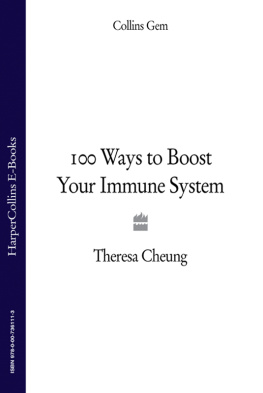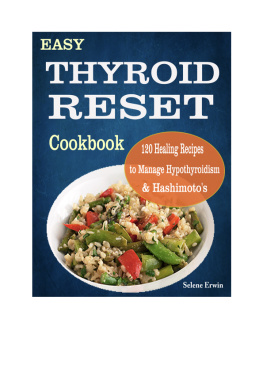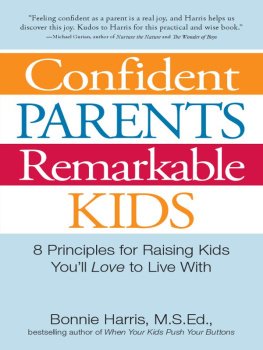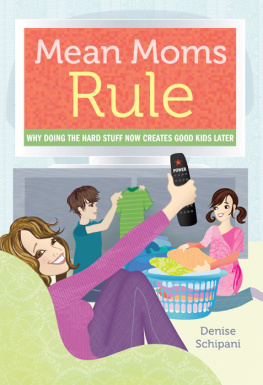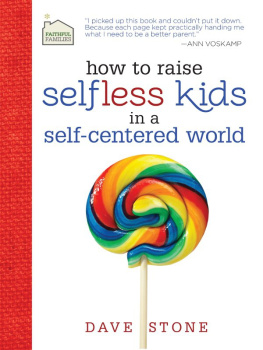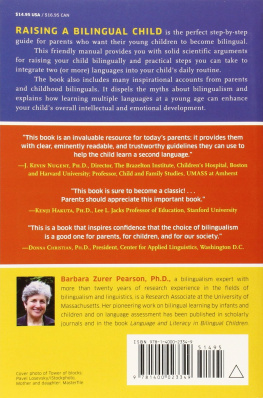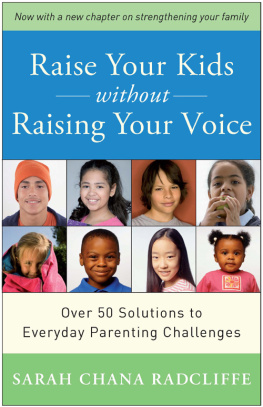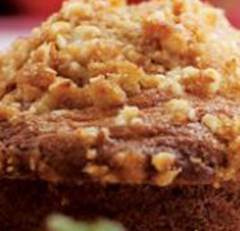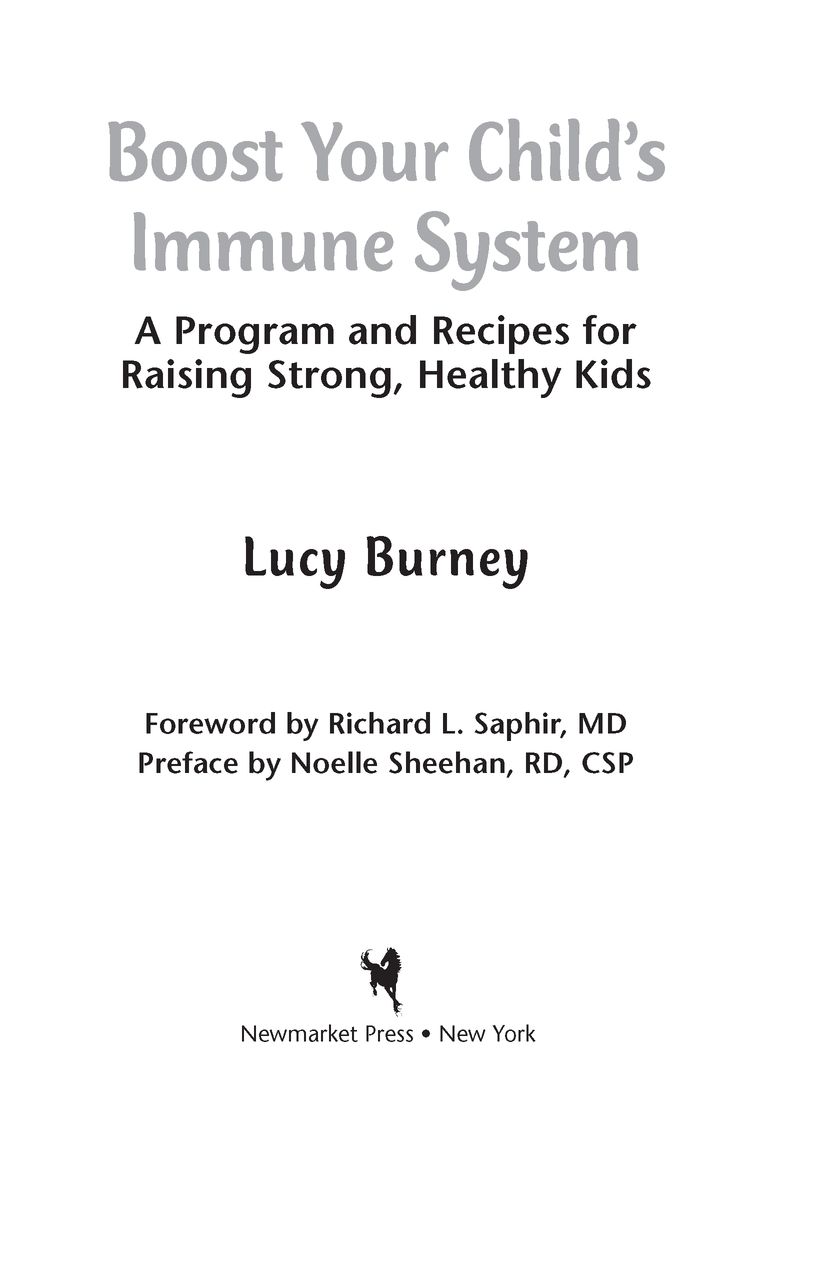Table of Contents
To Indy
AUTHORS NOTE
THIS BOOK HAS BEEN a true labor of love and there are a number of people whom I would like to thank for their part in making it happen. My thanks go to Laura Morris, my agent, and Rachel Winning, my editor, for their support and constructive advice; to Noelle Sheehan, RD, CSP, for her assistance in updating the information for American readers; to Richard Saphir for his generous foreword; to Lynne McTaggart and Dotti Irving, who both gave their time to offer advice; to my sister, Sarah, and her nanny, Michele, for testing endless recipes on family and friends; to my parents, for their years of support and encouragement; and finally to my Nige, who is as positive about the world as it is possible to be. For that and many other things, I am so very grateful.
The material in this book is for information purposes only. It is not intended as an alternative to medical advice. If you suspect your child is suffering from a medical condition, consult a doctor.
I have found myself referring to she throughout the book. This is because I had my daughter, Indy, while I was writing it. However, it is meant to refer to children of both sexes.
FOREWORD
Richard L. Saphir, M.D. Clinical Professor of Pediatrics, Mount Sinai School of Medicine, and member of the Editorial Advisory Board, Child Magazine
Parents want their children to be healthy, stay well, and to have vigorous energy with a minimum amount of illness. Many are looking for a magic system to help achieve this goal. Although there is no single how-to answer for improving good health through immunity, many experts agree that we are what we eat.
Where do parents find information on what foods are best for their childs immunity as they grow from infancy through the teenage years? This is a frequently asked question in my pediatric office. I had found it difficult to refer parents and caregivers to a book for the answers, but now we have this informative, yet highly readable book by Lucy Burney, Boost Your Childs Immune System.
In clear, simple, understandable language, Lucy explains how the immune system works, and clarifies the meaning of words such as T-lymphocytes, B-lymphocytes and more. My favorite chapter is called How It Works, where this is all explainedI wish I had written it! It is easy to read and detailed, all at the same time, offering valuable insights into something we all should know more about.
Lucy has created a program and recipes for raising strong and healthy kids through a good nutritious diet. Several chapters address what you need to know about preparing the best foods to give your child the right nutrients, naturally. The recipes included are a storehouse of common sense and good taste. Included in the book is age-specific guidance on foods and recipes that boost immunity. Lucy includes recipes for every stage of a childs lifefrom your babys first pures to healthy snacks for teens. These are foods even parents can enjoy and derive nutritious benefits from every day.
In my opinion, however, the book is worth the price for the recipes that you can easily use when your childs doctor places her on a list of foods and ingredients to avoid because of allergies or food sensitivities. Every recipe is coded, so that you can easily see which are vegetarian, wheat-free, milk-free or gluten-free. In addition, Lucys concise plan for preventing allergies is discussed in an interesting, accurate way, which is easier to understand than anything I have read previously.
The thorough glossary in this book is, by itself, a valuable toolexplaining and defining words like phytonutrients, phytals, free radicals, gluten, free fatty acids, antioxidants and more. Understanding these words helps create well-informed parents, who then fortunately pass on the information to their children through better, more nutritious meals.
Parents learn from their pediatricians, pediatricians learn from parents, and parents and pediatricians both can read and learn from this book. Lucy Burneys Boost Your Childs Immune System is a powerful, down-to-earth, commonsense approach to nutrition with recipes for raising strong, healthy kids. It will remain on my bookshelf, in my permanent collection.
PREFACE
Noelle Sheehan, RD, CSP
As a registered dietitian who is board certified as a specialist in pediatric nutrition, and a mother of two young children, I am often asked by colleagues and friends, How do you feed your children? I always answer, I feed them what I would eat. That is to say, I try to keep it simple with minimal fuss and with lots of whole, fresh foods.
Of course, there are times when I am about to pull my hair out because my toddler decides she does not want to eat the colorful, child-friendly meal I prepared or my preschooler decides that she no longer likes beef or chicken. Despite the best-laid plans, children will be childrenthey decide what they will eat. Its the parent or caretaker who should provide the most nutritious options possible.
When I read Boost Your Childs Immune System, I was impressed with the simple recipes and menu suggestions. You can even substitute your favorite meat or protein to fit your familys culture and budget. The creative menus and school lunch ideas will inspire you to rethink a cafeteria lunch and upgrade your brown bag lunch (for school or work).
Todays families are incredibly rushed at meal times. Often they do not get to sit down for a family meal more than once or twice per week. Unfortunately when some families do sit down for a meal, its often one high in fat and processed starches and with few vegetables. Boost Your Childs Immune System reminds you to provide nutritious whole foods at every meal. The book is a good resource for families who wish to make some nutritional changes but need menu suggestions and a refresher on what nutrients to include.
As you read this book, remember that while it contains recipes for children, the nutrients will benefit the grown-ups who purchase and prepare the food, too. Be a role model to your children by not only setting good examples at work and home, but by eating well.
INTRODUCTION
HEALTHY CHILDREN HAVE strong immune systems. Strong immune systems are formed by the foods they eat. A healthy diet will not only help to keep them well when theyre young, but also build up their resistance to disease and protect them in later life.
Over the last fifty years we have seen a dramatic decline in the quality of our childrens diets. Recent research has shown that, even in the aftermath of the Second World War, children growing up in the fifties had a healthier diet than those of today. Todays child is less physically active, consumes more refined and processed foods and is likely to develop early signs of diabetes and coronary heart disease due to obesity. According to the 2002 National Health and Nutrition Examination Survey, the number of overweight children in the United States has doubled among two-to-five-year-olds and tripled among six-to-eleven-year-olds. Although children are getting less fat from sweets and more from dairy, meats/proteins and snack foods, the proliferation of fat-free food products has helped keep American childrens diets rich in empty nutrients.


